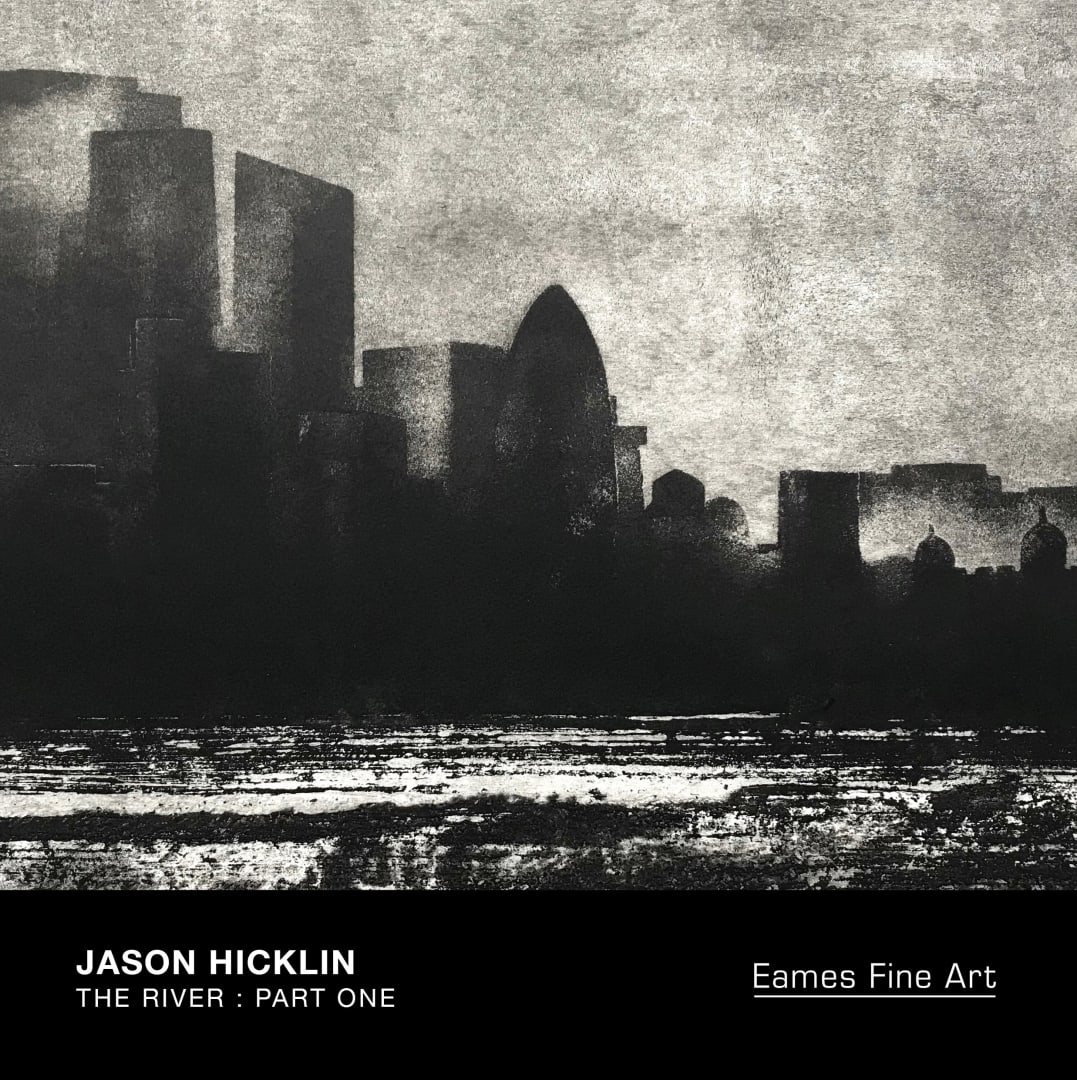Dimensions: 210 x 210 mm
Pages: 32
You can view the entire catalogue online here for free by clicking on view sample pages, but we would be delighted if you would like to purchase a hardcopy.
Introductory Essay
“The River is the reason that London is here.”—Jason Hicklin
With this statement, Jason Hicklin explains why he—an artist best known for his dramatic seascapes and landscapes—has come to create etchings and monotypes of the London cityscape. Jason’s work can prompt a meditation on the insignificance of man before the vast power of nature but rivers that run through cities show that humanity and nature are intertwined. A powerful body of water can catalyse the growth and innovation of a major metropolis. The Thames has always been the heart and soul of London, and has been a hub of trade and civilisation for thousands of years. Jason loves how the river ‘navigates itself through the history of the city.’ While the skyline of London has changed, and even the banks of the Thames have been altered, the importance and strength of the river has remained a constant.
Plenty of prominent artists throughout history have shared Jason’s appreciation for the sublime, urban beauty of the Thames’s shores—from Claude Monet’s Impressionist interpretations to Frank Bowling’s abstract textured paintings of the river. But Jason is doing something different and making these urban landscapes his own; in his etchings and monotypes he blurs some of the city’s most recognisable landmarks and focuses instead on the shorelines and the water. Jason gives us a gritty, unrestrained version of the Thames and of London.
Throughout his career, Jason has created the occasional etching or painting of the Thames, but this is the first time in thirty years that he has made a whole collection of works based on the city river. When he first moved to London from the land-locked industrial city of Wolverhampton, he used the river as his guide. It served him (as it has many others) as a sort of natural compass: as long as he knew where the river was, he would know which way he was meant to go. In 1991, Jason did a series of etchings of the Thames and London for his postgraduate degree in Advanced Printmaking. He gleaned his source material from the sketchbooks that he took with him on walks from Hammersmith Bridge to Greenwich Observatory and back. He has now returned to these same paths to create the new Thames works displayed for the first time in this exhibition.
In the three decades since 1991, Jason’s technique has changed along with the London skyline but his core belief in the beauty and the importance of the Thames has stayed as steadfast as the flow of the river itself. This exhibition gives visitors the chance to see Jason’s earlier etchings alongside his newest works. 2019 prints such as The Thames. City of London and The Thames. Southwark Bridge show how London has developed since Jason last depicted these areas, including the addition of buildings like The Shard and The Gherkin. Jason’s technique is also different to that which he employed when he was a student. 1991’s Blackfriars Bridge has a much more fluid composition than more recent work like The Thames. Southwark Bridge. A fresh look at these earlier pieces is welcome, but progress is clear in the confidence and precision with which line, texture, and the different strata of mark making are handled in his mature etchings.
It may seem counterintuitive that an artistic process that uses a metal plate—etching—should be so well suited to creating sensitive images of water and weather. But Jason explains just how these two elements are essential to one another:
“Water is fundamental to etching—without water, you can’t etch. The acid, ferric or nitric, has to be diluted with water. Once the etching process is complete, the acid is washed off in water.”
This interplay between liquid and metal is visible in the process, structures, and patterns of Jason’s etchings. The strength of the river is echoed in the burn of the acid and the solidity of the metal plate. Jason’s depictions of the Thames’s waves and eddies can look as metallic, resilient, and burnished as the metal onto which their forms have been etched. And, as Jason points out, some of his images of London were etched using ‘water which once flowed in the Thames.’ A poignant connection is therefore established between Jason’s art and the river that he loves.
Christine Slobogin, October 2019

